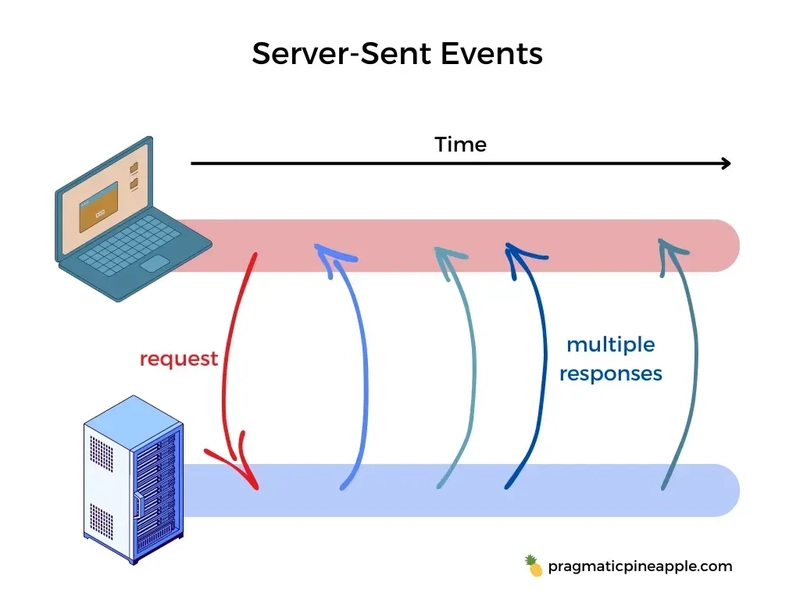Day 12/ 30 Days of Linux Mastery: Process Management Simplified
Table of Contents Introduction What is a Process in Linux? Core Process Management Commands Real-World Scenario: Process Management Conclusion Let's Connect Introduction Welcome back to Day 12 of this practical Linux challenge! Today is all about understanding processes, the moving parts of your Linux system. Understanding process management is a key part of ensuring applications and services remain stable and responsive, especially in production environments. Whether you are deploying a web app or debugging a stuck background job, knowing how to inspect and control processes can save you hours. What is a Process in Linux? A process is simply a running instance of a program or command. Every time you launch an app or command, Linux spins up a process for it, assigning it a unique PID (Process ID). Processes can run in the foreground (what you see) or background (what you don't), and they can be system-level (like the kernel) or user-started (like opening Vim or running Python). Types of Processes Foreground Process: Runs directly in your terminal. Background Process: Runs in the background, frees up the terminal. Zombie Process: Completed execution but still in the process table. Orphan Process: Parent process has terminated but the process is still running. Core Process Management Commands Process Management Command Description ps Show running processes top / htop Real-time monitoring (like Task Manager) pidof Get PID of a running process kill Send termination signal to a process killall Kill all instances of a process nice, renice Adjust priority of a process jobs List jobs in the current shell bg Resume a job in the background fg Bring a job to the foreground & Run command in the background nohup Run a command immune to hangups xkill GUI tool to kill a window (use with care) Ctrl+Z Stops the job temporarily, so that it can be managed Ctrl+C Used to cancel the current interactive job Real-World Scenario: Process Management Let’s run the sleep command and see the processes. bash sleep 300 Open another terminal tab or window, then run ps aux | grep sleep # Your process output is this; Monitor the process bash # run the following ps - # to see the running process top or htop - # for real-time monitoring ctrl+c - # to leave or cancel the current process/job To kill the process ps aux | grep sleep # Select the PID to kill the process numerically kill 3024 or kill sleep # you will notice it says terminated in the other terminal # To forcefully kill a process kill -9 3024 Conclusion In any real cloud environment (AWS, GCP, on-prem), processes might hang, spike in memory, or crash. You need to know how to handle them like a pro, with grace and speed. These process management commands give you that power. If this is helpful to you, feel free to bookmark, comment, like and follow me for Day 13! Let's Connect! If you want to connect or share your journey, feel free to reach out on LinkedIn. I am always happy to learn and build with others in the tech space. #30DaysLinuxChallenge #Redhat#RHCSA #RHCE #CloudWhistler #Linux #Rhel #Ansible #Vim #CloudComputing #DevOps #LinuxAutomation #IaC #SysAdmin#CloudEngineer

Table of Contents
- Introduction
- What is a Process in Linux?
- Core Process Management Commands
- Real-World Scenario: Process Management
- Conclusion
- Let's Connect
Introduction
Welcome back to Day 12 of this practical Linux challenge! Today is all about understanding processes, the moving parts of your Linux system. Understanding process management is a key part of ensuring applications and services remain stable and responsive, especially in production environments.
Whether you are deploying a web app or debugging a stuck background job, knowing how to inspect and control processes can save you hours.
What is a Process in Linux?
A process is simply a running instance of a program or command. Every time you launch an app or command, Linux spins up a process for it, assigning it a unique PID (Process ID).
Processes can run in the foreground (what you see) or background (what you don't), and they can be system-level (like the kernel) or user-started (like opening Vim or running Python).
- Types of Processes
Foreground Process: Runs directly in your terminal.
Background Process: Runs in the background, frees up the terminal.
Zombie Process: Completed execution but still in the process table.
Orphan Process: Parent process has terminated but the process is still running.
Core Process Management Commands
| Process Management Command | Description |
|---|---|
ps |
Show running processes |
top / htop
|
Real-time monitoring (like Task Manager) |
pidof |
Get PID of a running process |
kill |
Send termination signal to a process |
killall |
Kill all instances of a process |
nice, renice
|
Adjust priority of a process |
jobs |
List jobs in the current shell |
bg |
Resume a job in the background |
fg |
Bring a job to the foreground |
& |
Run command in the background |
nohup |
Run a command immune to hangups |
xkill |
GUI tool to kill a window (use with care) |
Ctrl+Z |
Stops the job temporarily, so that it can be managed |
Ctrl+C |
Used to cancel the current interactive job |
Real-World Scenario: Process Management
Let’s run the sleep command and see the processes.
bash
sleep 300
- Open another terminal tab or window, then run
ps aux | grep sleep
# Your process output is this;
- Monitor the process
bash
# run the following
ps - # to see the running process
top or htop - # for real-time monitoring
ctrl+c - # to leave or cancel the current process/job
- To kill the process
ps aux | grep sleep
# Select the PID to kill the process numerically
kill 3024 or kill sleep # you will notice it says terminated in the other terminal
# To forcefully kill a process
kill -9 3024
Conclusion
In any real cloud environment (AWS, GCP, on-prem), processes might hang, spike in memory, or crash. You need to know how to handle them like a pro, with grace and speed. These process management commands give you that power.
If this is helpful to you, feel free to bookmark, comment, like and follow me for Day 13!
Let's Connect!
If you want to connect or share your journey, feel free to reach out on LinkedIn.
I am always happy to learn and build with others in the tech space.
#30DaysLinuxChallenge #Redhat#RHCSA #RHCE #CloudWhistler #Linux #Rhel #Ansible #Vim #CloudComputing #DevOps #LinuxAutomation #IaC #SysAdmin#CloudEngineer






































































































































































![[The AI Show Episode 145]: OpenAI Releases o3 and o4-mini, AI Is Causing “Quiet Layoffs,” Executive Order on Youth AI Education & GPT-4o’s Controversial Update](https://www.marketingaiinstitute.com/hubfs/ep%20145%20cover.png)











































































































































































































































































_Inge_Johnsson-Alamy.jpg?width=1280&auto=webp&quality=80&disable=upscale#)


























































































![Turn any iPad into a gaming display with this one simple trick [Video]](https://i0.wp.com/9to5mac.com/wp-content/uploads/sites/6/2025/05/iPad-as-console-FI.jpg?resize=1200%2C628&quality=82&strip=all&ssl=1)















![Apple Shares Official Teaser for 'Highest 2 Lowest' Starring Denzel Washington [Video]](https://www.iclarified.com/images/news/97221/97221/97221-640.jpg)

![Under-Display Face ID Coming to iPhone 18 Pro and Pro Max [Rumor]](https://www.iclarified.com/images/news/97215/97215/97215-640.jpg)
![New Powerbeats Pro 2 Wireless Earbuds On Sale for $199.95 [Lowest Price Ever]](https://www.iclarified.com/images/news/97217/97217/97217-640.jpg)









































































































